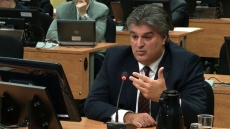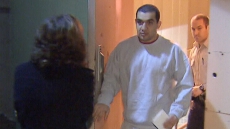OTTAWA — Somewhere right now, in a refugee camp in Amman or a rental apartment in Beirut or on a street in Istanbul, sits a Syrian hoping to be among the 25,000 people resettled to Canada, possibly by the end of the year.
United Nations staff working with the Canadian government to figure out who will be on the planes or ships dispatched to the region in the coming weeks say they are trying to keep expectations realistic.
"Rumours are already going in the refugee populations that there's a large program, that Canadians are coming," said Furio De Angelis, the Canadian representative of the UN High Commissioner for Refugees.
"We have to explain, present it as it is, an extraordinary effort but not everyone is eligible."
The UN refugee agency, tasked with overseeing what's been called the greatest refugee crisis since the Second World War — is actually very specific when it comes to selecting people for resettlement.
Their cases are assessed against a number of categories, including whether they're in immediate physical danger, are survivors of violence or torture, have medical needs or are a woman, child or adolescent at risk.
Those categories are applied against a person's current situation, not the one they left. So, for example, a female refugee from Syrian being detained in Lebanon and who is therefore at risk of being deported, could be a case that lands on a Canadian visa officer's desk.
But unlike usual procedures, where the cases are processed individually, this program will likely involving the batching together of groups and the simplification of paperwork. For example, the Canadian government could accept that no one under 18 is likely a major security risk and lessen the requirement to conduct detailed reviews of those files.

The focus is on choosing refugees from Jordan, Lebanon and Turkey.
In Jordan, there are 629,152 registered Syrians, the majority of whom do not live in refugee camps. The population is roughly split 50-50 between male and female and more than half are under the age of 18. About 30 per cent of the population is identified as having a specific need that would make them eligible for resettlement.
In Lebanon, there are around 1.1 million registered Syrians and though the government has no official camps for them, some have crowded into camps originally set up for Palestinians. There are at least 1,500 children, nearly three-quarters of them Syrian, begging or working as street vendors, according to the UN.
In Turkey, there are 2.1 million registered Syrians, again split roughly 50-50 between male and female and about a third are children. Two-thirds of the youngsters aren't in school, according to one recent study by Human Rights Watch. Alan Kurdi, the child whose family had considered trying to reach Canada as they fled from Syria, died instead trying to reach Turkey.
Altogether, there are 4.2 million people registered as refugees from the Syrian conflict, and the United Nations wants to resettle about a third.
While the Liberal plan is focused on the logistics of how to get some of them here now, they are also thinking about the future.
Immigration Minister John McCallum highlighted this week that one member of the committee pulling together the plan is Minister of Democratic Institutions Maryam Monsef.
"She is a minister who is actually a refugee herself," McCallum said. "We talked about the fact that 20 years from now we may have one of the Syrian refugees sitting around the cabinet table.

"That speaks to the kind of vision we have in this plan."
The Liberal cabinet meets to review their approach on Thursday.





